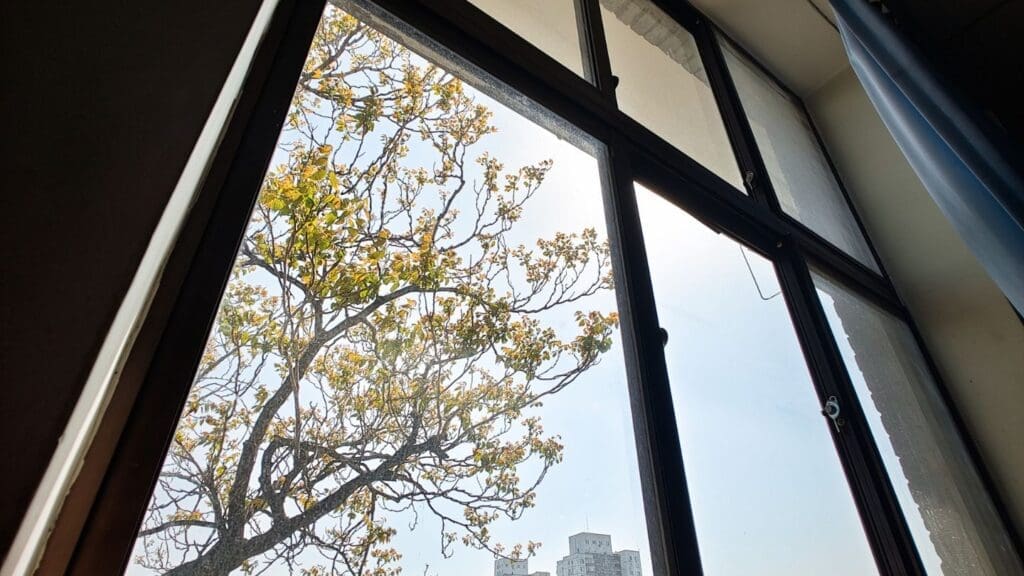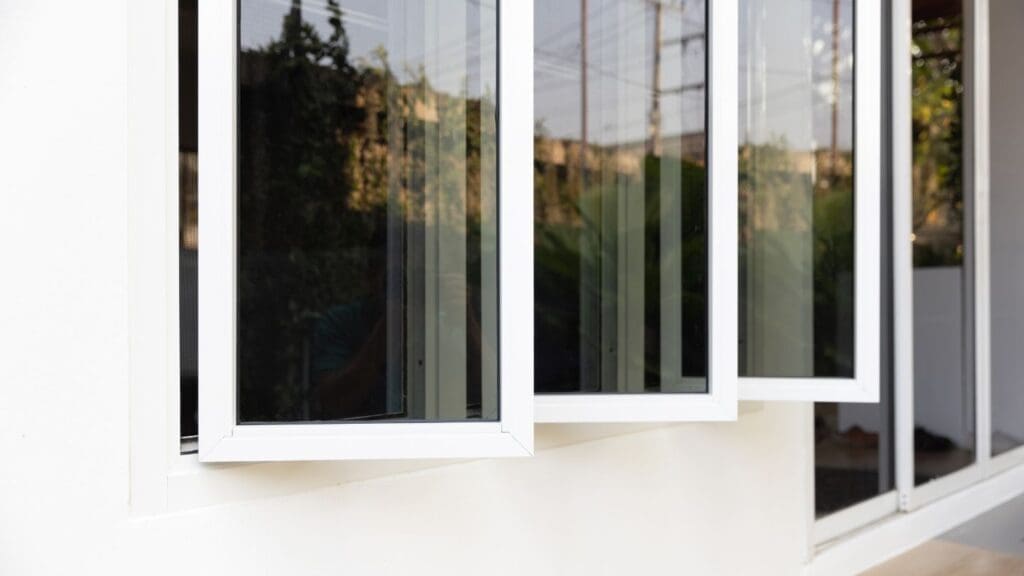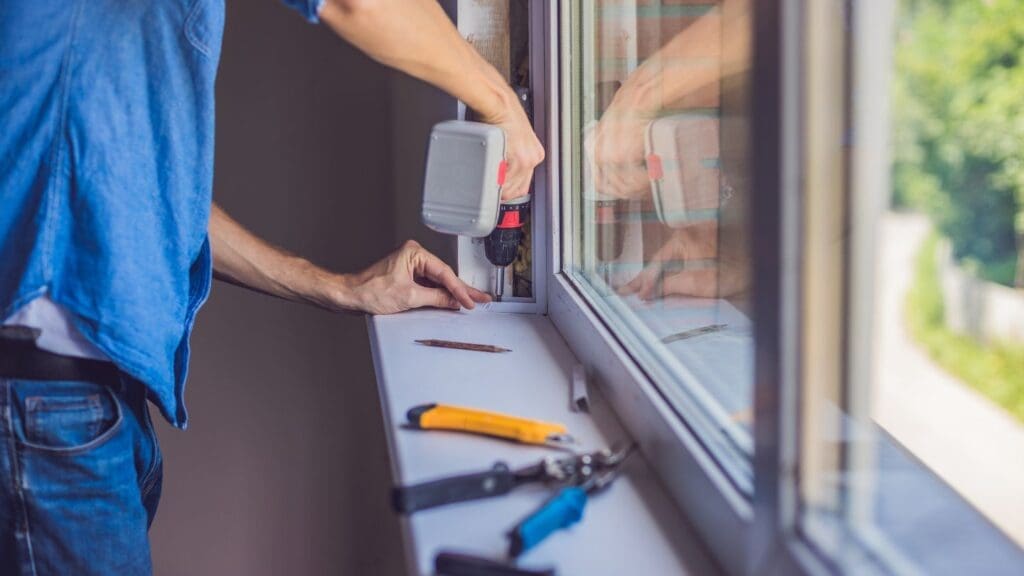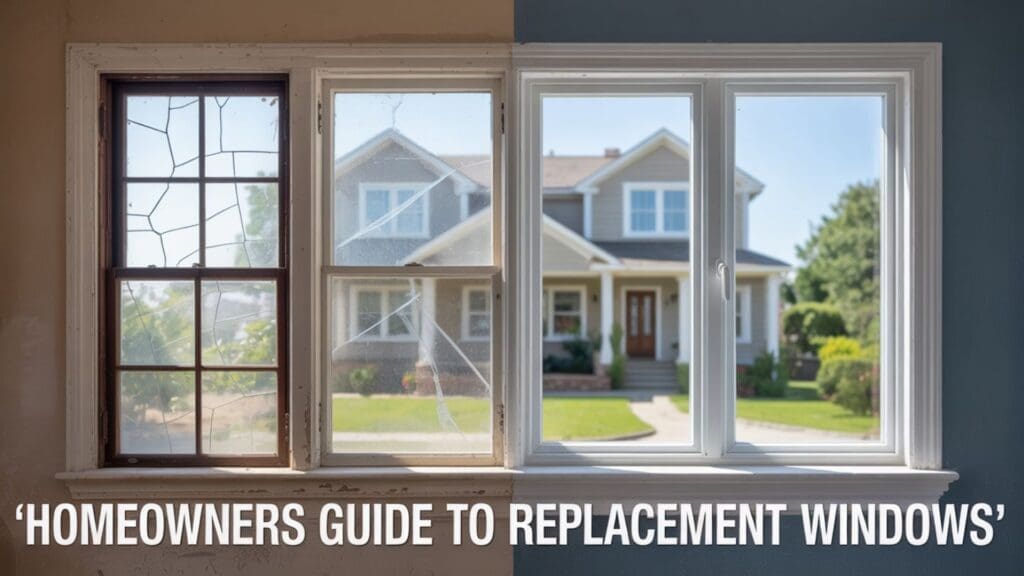Replacing your home’s windows isn’t just about improving aesthetics; it’s a strategic upgrade that enhances energy efficiency, indoor comfort, and property value. Whether you’re facing rising utility bills, dealing with stubborn sashes, or planning a full-scale renovation, understanding the window replacement process is essential. This blog equips homeowners with everything they need to know, from identifying when to replace, selecting the right materials, evaluating energy performance, and choosing a reliable contractor to avoiding common pitfalls and budgeting accurately.
Key Takeaways
- Signs indicating the need for window replacement include drafts, condensation between panes, and difficulty opening or closing windows.
- Choosing the right window material impacts durability, aesthetics, energy efficiency, and maintenance needs, with options including wood, vinyl, composite, fiberglass, and aluminum.
- Energy-efficient windows, marked by a low U-Factor and Solar Heat Gain Coefficient, can significantly reduce energy bills and enhance home comfort, making proper selection and installation critical.
Signs It’s Time to Replace Your Windows
Feeling a chill near your closed windows or noticing your curtains swaying on a windy day are clear signs of drafty windows, indicating inefficiency and the need for replacement. Rising energy bills can also indicate that your windows are not performing adequately.
Difficulty opening and closing your windows often signals deterioration, such as warped frames or failed hardware. Another red flag is condensation between window panes. Noticing a foggy film or moisture trapped between panes, or visible damage like broken glass, indicates it’s time for new windows.
Clouded windows from condensation not only obscure your view but also indicate insulation issues, potentially leading to mold growth and further damage.
Constant drafts, stubborn sashes, or unsightly fogging signal it’s time for a window replacement project. New windows will improve your home’s comfort, energy efficiency, and overall aesthetic and value through home improvement projects.
Choosing the Right Window Material
Choosing the right window materials affects the durability, aesthetics, and energy efficiency of your new windows. Common materials include:
- Wood
- Vinyl
- Composite
- Fiberglass
- Aluminum
Each offering has unique benefits.
Wood Windows are known for their timeless beauty and excellent insulation properties. Key points include:
- Interior wood used: pine, maple, and oak, offering various finishing options to fit any décor
- Require significant maintenance to protect against rot and weather damage
- Higher price range: $150 to $1,300 per window
Vinyl Windows. If you’re looking for a low-maintenance, cost-effective option, vinyl windows might be your best bet. Key features include:
- Energy-efficient
- Easy to clean
- Typically range from $100 to $900
- Vinyl frames can last over 20 years
- Usually do not fade, chip, or peel
These qualities make them a durable option for homeowners seeking minimal upkeep.
Composite Windows: Composite frames mimic the look of wood but with lower maintenance and enhanced durability. These frames are made from a blend of materials, offering the aesthetic appeal of wood without the associated upkeep. Composite windows generally cost between $300 and $1,200, providing a balance between affordability and performance.
Key features of composite windows:
- Mimic the look of wood
- Require lower maintenance
- Offer enhanced durability
- Made from a blend of materials
- Provide aesthetic appeal of wood without upkeep
- Cost between $300 and $1,200, balancing affordability and performance
Fiberglass Windows are known for:
- Durability and ability to withstand extreme weather conditions
- Engineered to resist expansion and contraction, making them stable for various climates
- Cost ranging between $500 and $1,500, reflecting their high performance and longevity
Aluminum Windows: For those on a budget, aluminum windows are the most affordable option, priced from $75 to $400. They are durable and require little maintenance, though they may not offer the same level of insulation as other materials.
Choosing the right window material involves balancing cost, maintenance, and energy efficiency to meet your specific needs.
Understanding Window Energy Efficiency

When selecting replacement windows, energy efficiency is crucial as it affects your home’s energy bills and comfort. Important metrics to consider are the U-Factor and the Solar Heat Gain Coefficient (SHGC), as rated by the National Fenestration Rating Council.
The U-Factor measures the rate of heat loss through a window. Lower values indicate better insulation properties, which means less heat escapes during the winter, keeping your home warmer. In colder climates, a U-Factor of 0.25 or lower is ideal for maintaining indoor warmth. On the other hand, the SHGC measures how much solar heat a window blocks. Lower SHGC values mean less heat enters your home, which is beneficial in hot climates.
ENERGY STAR benchmarks these metrics based on regional climates, ensuring optimal performance. Energy-efficient windows with the Energy Star label can save up to 13% on energy bills and reduce energy costs by over 6,200 annually per home, ultimately lowering energy costs.
Homeowners looking to boost resale value should consider the impact of window replacement on property value. High-performance windows not only improve curb appeal but also offer a strong return on investment, especially in competitive real estate markets.
Features like Low E coatings and double-pane windows enhance window energy efficiency. Low E coatings retain heat in winter, block solar gain in summer, and protect against UV rays. Proper installation is vital to prevent gaps that compromise insulation.
Popular Types of Replacement Windows

Choosing the right type of replacement windows can significantly affect functionality and aesthetics. Here are some popular options and their benefits.
Double-hung windows: These are the most widely used type of window in residential settings. They feature two operable sashes that slide vertically, allowing for improved airflow and easy cleaning. Their versatility and classic look make them a favorite among homeowners.
Sliding Windows: These operate by gliding along a track, offering ease of use and unobstructed views. They are particularly favored for areas where you want a wide view of the outdoors without the obstruction of window frames.
Casement Windows: Casement windows are hinged on one side and open outward with a crank. They provide excellent ventilation and are easy to clean from the inside. Casement windows are ideal for areas where you want maximum airflow and a clear view.
Awning Windows have the following characteristics:
- Hinged at the top and open outward, allowing for ventilation even during rain.
- Typically installed higher on walls for privacy.
- Provide light and airflow.
Fixed and Garden Windows: Fixed windows do not open and are used primarily for natural light and unobstructed views. Garden windows protrude from the home and are designed for plants or decorative displays, adding a unique architectural feature to your home.
Measuring for Replacement Windows
Accurate measurement is crucial for a successful window replacement. Follow this step-by-step guide to ensure precision.
Start by measuring the width of the window opening at three points: top, middle, and bottom. Use the smallest measurement to ensure the new window fits without gaps. Next, measure the height from the highest point of the sill to the top of the window opening, checking at the left, center, and right. Again, use the smallest measurement for accuracy.
Depth measurement involves assessing the frame from the inside face of the interior stop to the inside face of the exterior stop, disregarding any pulleys. Checking for square is also essential; measure diagonally across the window frame’s corners, ensuring discrepancies do not exceed 1/4 inch.
Whether you’re budgeting or choosing materials, replacing old windows, or planning your home improvement project requires a structured approach. Factoring in energy efficiency, design preferences, and installation timelines is essential for achieving long-term value.
The Window Installation Process

The window installation process is critical for the performance and lifespan of your new windows. Here’s what to expect during the installation of windows and a professional installation, ensuring everything is properly installed.
The process starts with:
- Removing any storm windows and cutting ropes for the window sash weights.
- The foreman is inspecting the new windows for damage and verifying correct delivery.
- Proper leveling of the sill to ensure a correct fit for the new window.
During installation:
- Check for gaps between the window frame and sill, and between the frame and wall.
- Spray foam insulation fills these gaps, making the installation airtight and waterproof.
- New windows are leveled with shims.
- Insert windows are nailed into place.
- Windows are tested for functionality and inspected for leaks or damage.
Exterior trim installation involves:
- Using finish nails to install the trim
- Sealing edges with caulk for a weather-tight seal
- Including weep holes to drain water
Proper installation ensures the longevity and performance of your new windows.
Cost Factors in Window Replacement
Several factors influence the cost of a window replacement project. Understanding these can help you budget effectively.
The number of windows being replaced is a significant cost factor. Naturally, more replacements mean a higher overall cost. The style and size of the windows also play a crucial role, with larger and more complex types like bay or bow windows typically being more expensive than standard double-hung or casement windows.
The material of the window frames significantly influences the price. For example, aluminum frame material is generally cheaper, while wood frame windows are more costly due to their aesthetic appeal and existing frame insulation properties. The choice of window frame materials can also impact overall durability.
Installation costs vary based on several factors:
- Whether you hire a professional or opt for DIY. Professional installation ensures a proper fit and long-term performance, but is more expensive.
- Seasonal demand.
- Additional accessories like custom trim or glass options.
Understanding these cost factors helps you make informed decisions and avoid unexpected expenses during your window replacement project.
Avoiding Common Mistakes in Window Replacement
Replacing windows is a significant investment. Avoiding common mistakes can save you time, money, and headaches. One common mistake is choosing low-quality materials based on limited-time price promotions. While it might seem like a good deal initially, low-quality windows can lead to higher maintenance costs and poor long-term performance. It’s essential to select the appropriate window type that meets both aesthetic and functional requirements.
Another mistake is neglecting the quality of window installation. Poor installation can lead to drafts, leaks, and reduced energy efficiency. Homeowners should also explore new window manufacturers that might offer better performance and value. Thoroughly researching contractors and understanding the replacement process can help you avoid these pitfalls.
How to Choose a Window Installation Contractor
Choosing the right contractor for your window replacement project is crucial for a successful installation. Ensure the contractor meets the following criteria:
- Licensed, bonded, and insured to protect against liability and ensure compliance.
- Holds the necessary licensing in your state or city.
- Has at least five years of experience to demonstrate reliability and quality.
To find the best contractor:
- Check customer ratings on Google, Yelp, and the Better Business Bureau to gauge a contractor’s reputation.
- Ask neighbors and coworkers for recommendations.
- Interview multiple contractors to find the best fit.
- Focus on communication: understand the contractor’s installation process and ask detailed questions about available window options.
Getting multiple bids helps you assess pricing and avoid low-quality or potentially fraudulent options. An independent contractor focusing on installation rather than specific brands is often a better choice.
Benefits of Replacing Old Windows
Replacing old windows offers numerous benefits, including:
- Energy savings: ENERGY STAR-certified windows can reduce energy bills by 12% on average across the U.S.
- Increased home value: New windows can potentially increase your home’s sale price by 2-6% in certain markets.
- Improved aesthetics: New windows enhance the look of your home.
- Quieter home environment: New windows create a quieter home.
- Reduced drafts: This leads to savings on heating and cooling bills.
Upgrading to modern window systems enhances your home’s curb appeal, especially if your existing windows are outdated. New windows also help minimize allergens with window features like between-the-glass blinds and reduce outdoor noise, contributing to a quieter living environment. Additionally, installing home windows can further improve the overall aesthetic and functionality of your space.
Modern windows are designed for easy maintenance, requiring less cleaning effort, and they enhance home security with advanced locking mechanisms. Overall, replacing old windows is a worthwhile investment offering both immediate and long-term benefits.
Final Thoughts
Replacing old windows is a smart investment that improves your home’s energy efficiency, boosts curb appeal, minimizes drafts and noise, and increases property value. This guide has walked you through everything from recognizing when to replace your windows, selecting the right materials, understanding energy ratings, exploring window styles, and navigating installation and cost considerations.
For homeowners seeking services for window replacement in Houston, Advanced Window Products delivers expert installation and energy-efficient solutions tailored to your needs. Their proven track record, professional team, and high-performance products make them a trusted choice for long-term value and satisfaction.
Frequently Asked Questions
How can I tell if it’s time to replace my windows?
It is time to replace your windows if you notice drafts, increasing energy bills, difficulty in operation, or condensation between the panes. Addressing these issues promptly will enhance your home’s energy efficiency and comfort.
What are the most energy-efficient window materials?
Vinyl and fiberglass windows are among the most energy-efficient materials due to their excellent insulation properties and low maintenance needs. Choosing these options can significantly enhance energy savings in your home.
How does AWP’s installation process differ from others?
AWP’s installation process stands out due to its meticulous care, professional conduct, and commitment to thorough cleanup, ultimately ensuring high customer satisfaction.
What are the benefits of replacing old windows with new ones?
Replacing old windows with new ones significantly reduces energy bills and enhances home value while also improving aesthetics, minimizing allergens, reducing noise, and enhancing security. Investing in new windows is a practical choice that provides both comfort and efficiency.
What should I look for in a window installation contractor?
It is essential to choose a window installation contractor who is licensed, bonded, and insured, has strong customer ratings, and provides a transparent, detailed installation process. This will ensure a reliable and professional service.
